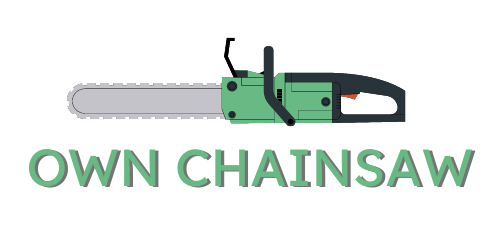No one likes the feeling of their chainsaw leaking oil all over the place, leaving a sticky mess to clean up. It’s an annoying and time-consuming problem that just keeps coming back.
So, how can you store your chainsaw without oil leaking?
Whether you’re a homeowner looking to keep your yard in top shape or a professional woodworker, you know the headache behind proper storing of chainsaws and the pains related to it.
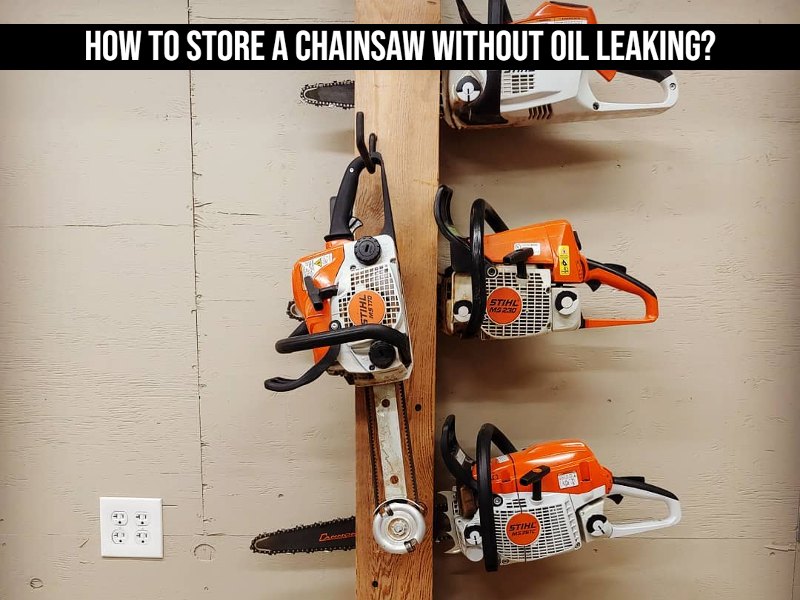
While oil is essential to keep your chainsaw running smoothly, it can also make a big mess if it leaks out while the chainsaw is in storage.
Before you store your chainsaw, you’ll want to make sure it’s clean and free of dirt, sawdust, and other debris that can clog the oil ports. This will help keep the lubricant in and the moisture out.
So if you’re looking for a simple, effective way to store your chainsaw without having to worry about oil leaks, we’ve got you covered!
What causes the chainsaw to leak?
Chainsaws are a highly effective tool for heavy-duty cutting jobs, but they need to be properly maintained to remain in good working condition. One common problem with chainsaws is oil leaks, and this can be caused by a variety of issues.
1. A Damaged Oil Cap
The most common cause of chainsaw oil leaks is a damaged oil cap. Flip-top toolless caps, which are commonly used in chainsaws, are prone to splitting or cracking, which allows oil to leak out. If the cap is not replaced or repaired, the oil will continue to leak out.
2. Improper Storage

In the event of poor storage, the oil in a chainsaw can leak out. As the temperature fluctuates in an unheated garage, the oil can expand and contract, causing it to leak out of the reservoir if the chainsaw is left there.
3. Clogged Oil Line
If the chainsaw’s oil line is clogged, it can prevent the oil from flowing from the tank to the guide bar, causing the chainsaw to leak. This issue could be caused by debris that has built up in the line or a faulty part.
4. Damaged Oil Pump
Leaking oil from a chainsaw can also be caused by a damaged oil pump. In the guide bar, the oil pump pushes the oil from the tank. Oil can leak from a damaged or faulty pump.
How Should A Chainsaw Be Stored So It Does Not Leak?
If you own a chainsaw, you know that proper storage is essential to keep it in good condition and prevent problems such as oil leakage.
Knowing how to store a chainsaw properly is an important part of being a responsible chainsaw owner. Here are some tips for how to store your chainsaw so it does not leak.
1. Empty the Oil reservoir
Storing a chainsaw properly is essential for its longevity and performance. Before putting the chainsaw into storage, one of the most important steps is to empty the oil reservoir for the bar and chain.
This will help to prevent the oil from leaking out of the chainsaw while it is in storage. If the reservoir is not emptied, the oil could leak out of the chainsaw and damage the area where it is stored.
To empty the reservoir, first, make sure that the engine is not running and the chainsaw is in an upright position. Look on the side of the reservoir for a small tab or valve.
Oil will be emptied using this. Once the tab or valve is opened, the oil will begin to drain out of the reservoir. When the reservoir is empty, close the tab or valve and it is ready to be stored.
2. Check the oil lines
The oil lines feed bar oil from an oil tank to an oil pump. It is essential to check them for breaks or leaks as any oil that is not getting to the pump can accumulate in the lines and cause potential leakage.
To do this, the bottom cover of the chainsaw must be removed to give access to the oil lines. If cracks or breaks or leaks are found, they must be replaced immediately. If some oil has leaked onto the chainsaw, it should be wiped off with a clean cloth.
Any oil lines and connections ought to also be firmly connected to the pump. Keeping the oil lines in good condition and free of leaks is important to ensure that the chainsaw is working correctly and to prevent unnecessary damage.
3. Do not overfill your chainsaw’s oil tank
When using a chainsaw, it is essential to maintain the oil level in the storage tank so that it does not overfill and cause a potential leak. This is especially true when storing the chainsaw between uses.
Overfilled oil storage tanks can leak due to expansion caused by temperature changes. The tank should never be filled beyond its maximum level to prevent leaks.
When filling the tank, make sure to only use the recommended oil for the chainsaw and keep the reservoir slightly below its maximum fill level when storing the tool.
Check the oil level regularly to ensure it is at the right level. If you’re storing the chainsaw in an outhouse or an uninsulated garage, where the temperature drops or rises, check it more frequently.
4. Check if the plugs are secure
One of the important steps to ensure proper storage is to make sure the rubber or plastic plugs for the oil ports are in place and secure.
Over time, these plugs can deteriorate and can become loose, allowing oil and/or fuel to escape. That is why it is vital to check these plugs every time before the chainsaw is stored away.
Replacement plugs are readily available at most hardware stores and do not cost much. It may also be a good idea to keep a few on hand in case one or more of the plugs become too worn and need to be replaced.
5. Store the chainsaw vertically
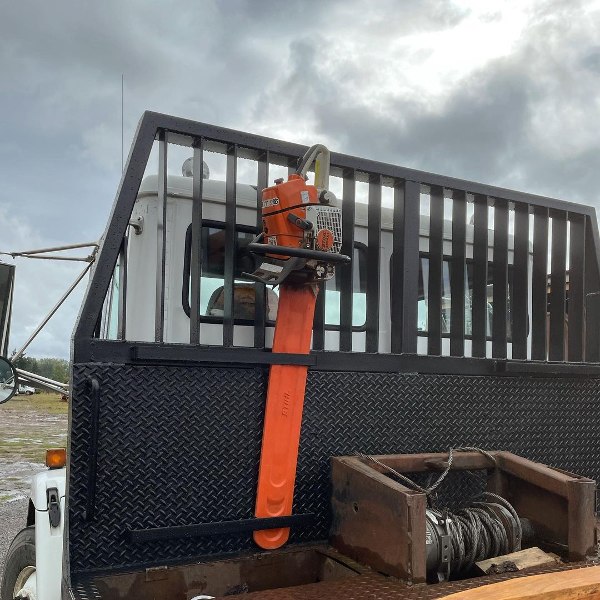
Storing a chainsaw vertically is the best way to avoid oil and gasoline leaks. This is because when a chainsaw is stored horizontally, oil and gasoline can escape from the oil cap or the bar and chain oil reservoir. This can lead to a lot of mess and even damage to the saw.
When storing a chainsaw vertically, it is important to ensure that it is done on a level surface. As a result, spills and leaks will be prevented and the chainsaw will be held in place. The chainsaw should also be completely cooled before it is stored vertically.
Chainsaws need to be stored vertically with the handle pointing in the same direction as the bar and chain. In this way, you will ensure that the oil and gasoline are evenly distributed throughout the saw and that the chain and bar are lubricated.
Last but not least, when storing chainsaws vertically, it is imperative to always check the oil level. By doing this, you will ensure that the chainsaw is well-lubricated and that the bar and chain are working properly at all times.
6. Check the Oil cap
When storing a chainsaw, it is necessary to check the oil cap for any damage, cracks, or splits. Even if the cap looks fine, it is still important to check it.
Damaged oil caps can cause oil and gasoline to leak from the chainsaw, which can be dangerous and messy.
Chainsaw oil caps should be inspected before, during, and after storage. If even the slightest damage is found, the oil cap needs to be replaced immediately.
7. Store in a Dry Place
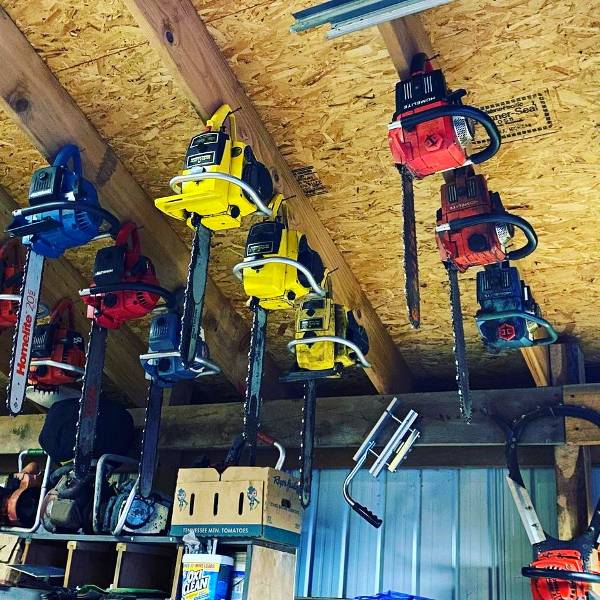
Chainsaws need to be stored in a dry area to preserve their life and keep them working smoothly.
Moisture can cause corrosion, rust, and other damage to the metal parts of the saw and can even lead to leaks in the fuel tank. Drying the chainsaw will keep it away from moisture and prevent it from developing these problems.
A dry place could be a shed, garage, or other enclosed space. The location should be away from any sources of moisture, such as a bathroom or an area with a lot of humidity.
When storing the chainsaw outside, make sure it is covered and protected from direct sunlight. It is also important to periodically inspect the chainsaw for obvious signs of water damage or leakage.
8. Keeping it Separate
Keeping your chainsaw separate from other tools and materials is essential when storing it. Chainsaws should be kept on separate shelves or cabinets.
By doing so, any oil that leaks will not spread to other items nearby. If possible, place the chainsaw on a piece of cardboard or inside of a cloth.
This will help to absorb excess oil that may leak and will also protect the chainsaw from excess moisture that could damage it.
If the chainsaw is stored in a toolbox, make sure it is in a sealed container. This will help to keep the oil in and any moisture out. Be sure that the toolbox is stored in a dry, well-ventilated area.
Is it normal for a chainsaw to leak bar & chain oil when in storage?
The answer to this question is yes, it is normal for a chainsaw to release a small amount of oil after usage. This is because when the chainsaw is running, the chain is continuously lubricated by the oil stored in the reservoir.
As the chain moves, it creates pressure on the oil, which is then forced through the lines and out of the bar rails. This is a normal part of the oiling system’s design, so it is expected that some amount of oil will be released when the chainsaw is in storage.
To prevent any messes or damage, it is a good idea to put a rag underneath your chainsaw before storing it.
This will help to catch some minor amounts of oil that may leak out. After a few days, you should be able to remove the rag and see if further additional oil has leaked out.
That being said, it is important to keep an eye on the level of oil in your chainsaw to avoid overfilling. If there is any more leakage after a few days of storage, it is likely that your chainsaw has been overfilled with oil or needs some maintenance.
The Verdict!
Storing a chainsaw without oil leaking is relatively simple as long as all of the necessary steps are taken.
First, it is important to ensure that the chainsaw is clean and free from dirt and debris. It is also advisable to empty the chainsaw of any leftover fuel and oil and to remove and store the spark plug separately.
In addition, the oil tank needs to be tightly closed, and the rubber seals have to be intact. Furthermore, chainsaws should be stored in dry, ventilated areas, preferably in their original boxes.
Following these steps will help to ensure that the chainsaw remains in optimal condition and prevents the possibility of oil leakage while it is stored.
FAQs
How often should I check my chainsaw for oil leakage when storing it?
You must test your chainsaw’s oil leak from week to week, or whenever you plan to use it. If you detect leaking oil, you ought to address the issue immediately by cleaning the saw and applying a fresh coat of bar and chain oil. Additionally, you need to check the oil level in the reservoir before each use and top up if required.
What is the best type of container to store my chainsaw in?
The best container for your chainsaw is one that is both airtight and waterproof. This will help to maintain the saw’s condition and keep leftover residual oil from leaking. Additionally, you should make sure the container is large enough to comfortably fit the saw and all the accessories it comes with, such as the chain, guide bar, and oil bottle.
How often should the chainsaw be serviced to prevent oil leaks?
The chainsaw needs to be serviced regularly to avoid oil leaks. Depending on the type of chainsaw, it may need to be serviced once a year or after every 50-100 hours of use. During the service, the chainsaw needs to be checked for wear and tear, as well as evidence of signs of oil leakage. Additionally, the spark plug and air filter require to be replaced and the chain should be sharpened and tensioned.
What is a chainsaw oil leakage test?
A test for chainsaw oil leakage is a type of maintenance test that is done to inspect the chainsaw for possible oil leakage. This test is done by applying pressure to all the external parts of the chainsaw to check for any signs of leaks. The oil may not be leaking from one or more of the seals, gaskets, or other components, and if it is, the chainsaw should be serviced or replaced.
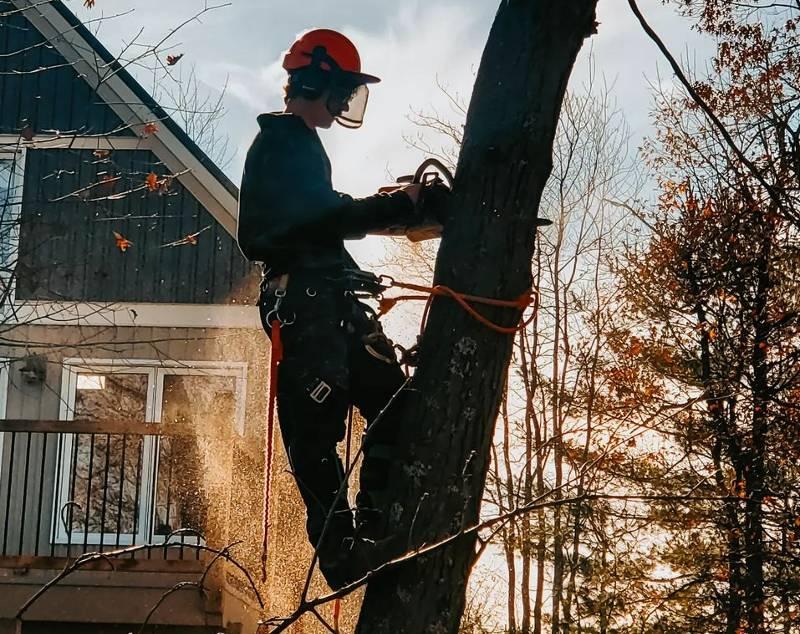
I am Senior Editor and CEO and I have been a chainsaw enthusiast for over 12 years. As a passionate chainsaw enthusiast, I have got a wealth of knowledge and experience with chainsaws, and I am constantly striving to expand my expertise and knowledge. Read More!
